I just got off the phone with a senior leader at a multinational. He’s experienced, highly competent and in the middle of a turnaround situation.
During our call, I asked him “so what’s your vision for your team next year? How do they need to grow and step up? What would you like them to be doing differently this time in twelve months.”
This stumped him. “You’re right, this is important. And actually, I’ve been meaning to think this through properly but there are so many operational demands right now I’ve not had the time to think clearly. I’m taking some holidays over Christmas, so will try to give it some thought then.”
More...
Aside from the point that his holidays should be for resting and relationships and not for strategic thinking about work, he’s obviously unclear about exactly what his leadership team needs right now, and so he’s unable to be intentional and strategic in making sure they grow.
Sound familiar? I’ve been there, too. There can be so much to do that we forget to think carefully about some of the most important levers we have at our disposition, such as helping our team step up to a new level. So we remain the bottleneck, because too much has to rest on our shoulders.
What’s a people plan (team development plan) and why do I want one?
Most leaders know the frustration of the team not living up to their potential, but are quietly cynical about the opportunity for real change. I regularly hear comments like “there’s too much dead weight”, “I just don’t have quality people”, “ people just aren’t stepping up” and so forth.
But there’s no business transformation without personal transformation.
So getting intentional about growing your people, and strategic about how you do just that, is a must for any manager who truly wants to lead their team to a new level of business results.
A People Plan is simply about getting your best thoughts to grow your team on paper, and taking steps to make that a reality.
Of course, many corporations have annual performance reviews and development planning processes. But these:
In contrast, the People Plan is lightweight, simple and effective. It forces you as a manager to get highly strategic and consider the real issues holding your team back - individually and corporately.
If you’re in a hurry, the best thing to do is download the People Plan worksheets now so you have them available and can work through them at a convenient time. This is highly valuable, strategic work that can transform how things pan out over the year ahead.
No interest? Well, do you have a #1 Strategic Goal?
If leaders aren’t interested in team development, it’s probably because they’re not pursuing a goal so exciting and ambitious that it requires everyone to step up to a new level.
Typically when I work with leaders and their team I help them identify and mobilise their people around a “rallying cry” - a #1 strategic goal that will make a massive difference in the business.
So, what would ‘a massive difference’ look like in your business?
Defining and aligning around that goal is a subject in itself. If you’d like to speak more about what that might look like for your team, let’s schedule a 1:1 conversation to discuss.
How to create a powerful people plan / team development plan
Great leaders take time to invest in the most strategic activities.
The others complain about being too stuck in too many operational details.
Procrastination on strategic activities is a killer. But it’s a lot easier to get something done when it’s clear and actionable rather than just a fuzzy concept.
So, let’s get clear on the step-by-step process you’ll need to develop a ‘people plan’ for your team. This will help you become incredibly strategic and focused on how to get the best from your team in the next year.
BEFORE the people planning session you need to make sure your people planning session doesn’t become a victim of day-to-day business pressures. This kind of important, strategic work can so easily get squeezed by the urgent.
DURING the people planning session there are 4 main steps that will help you get the best from the time you’ve set aside.
AFTER the people planning session you must avoid wasting your effort and ensure you get the value out of the thinking you’ve done.
I shot a quick video where I explain these points briefly. You might like to watch that:
BEFORE the people planning session: Make sure it actually happens
The first step is to actually set yourself up for success and turn this from a “good idea” into a “mini-project that gets done”.
There are two key steps you can do right now to take action:
1. Schedule a meeting with yourself
Go ahead, grab your calendar right now and block out some time with yourself to actually do this. What doesn’t get scheduled doesn’t get done. An hour would be a good amount of time for the people planning exercise.
Feeling some resistance at the idea of taking an hour out of your week for this kind of reflection? Remember this is the ‘deep work’ - the important strategic thinking that will give you clarity on how to take your team up a level in the year ahead. This is “$10K/hour work” as a minimum.
2. Print out the worksheets so they’re ready
We’re more likely to procrastinate at hard, ambiguous and ill-defined tasks. So download and print out the people plan worksheets now, so you can just sit down at the right moment, follow the process, and come out with a clear plan.
DURING the people planning session: Run through the 4-step process
1. Map the current reality of your team
(a) Map performance vs potential
Plot each person in your team on the performance chart.
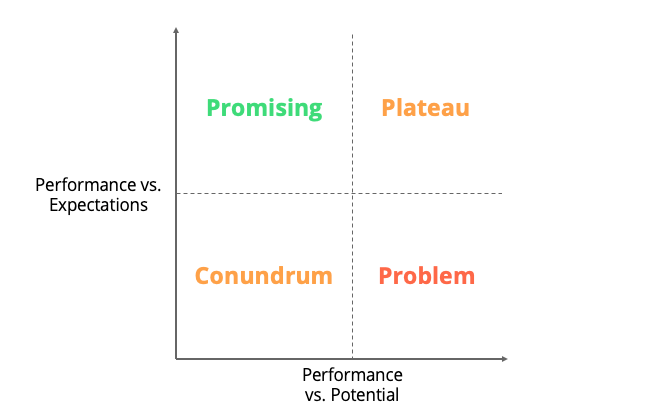
High Performance vs. Expectations + High Performance vs. Potential
PLATEAU. They’re a great fit in their current role - though you sense they may have plateau’d.
High Performance vs. Expectations + Low Performance vs. Potential
PROMISING. They’re doing well, but could be contributing at an even higher level.
Low Performance vs. Expectations + High Performance vs. Potential
PROBLEM. You’re unhappy with their performance but aren’t convinced they have it in them to step up.
Low Performance vs. Expectations + Low Performance vs. Potential
CONUNDRUM. Something’s going on: they have a lot to give but right now something’s not quite working or they’ve yet to hit their stride in their current role.
You will end up with a map looking something like this:
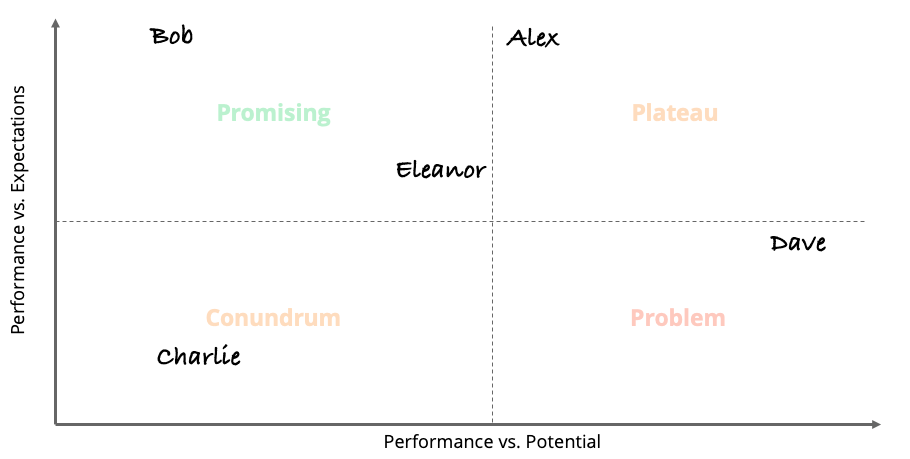
(b) Identify their limiting factor
Next to each person, ask yourself “what’s holding them back right now?” and write down their #1 limiting factor. It’s helpful to first identify the category:
Once you’ve decided if the issue is IQ, EQ or CQ, you can go ahead and jot down a one-sentence note on the specific issue.
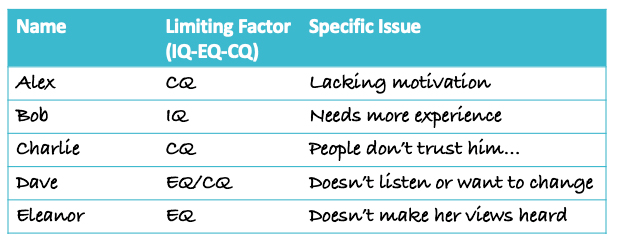
(c) Clarify your best vision of them
One of the most incredible gifts a leader can give their people is the gift of vision. Often we think of vision in terms of business vision, annual goals, and overall industry trends.
But if you offer people an inspiring vision of how you see them and who they can become, they will often respond and grow in amazing ways.
So ask yourself: what do you see in them? What’s their superpower? What’s their next level? What’s within them that, if they could just draw out and access, would change everything?
Four letters can change someone’s life: I.C.N.U.. I see in you…
So, what do you see in your people? Often they might not even see it themselves. And if you don’t see it, it will be impossible for you to draw it out of them.

2. Review environmental factors affecting each person
So now you’ve built a map of the current situation and what’s going on for each of your team. Now let’s actually consider the environment that you, as the leader, have created for that person. What’s the context they’re operating in, and how’s that affecting them?
(a) Organisational clarity + context
It’s worth asking yourself how the organisation is supporting or hindering each person:
Note down your thoughts for each person.
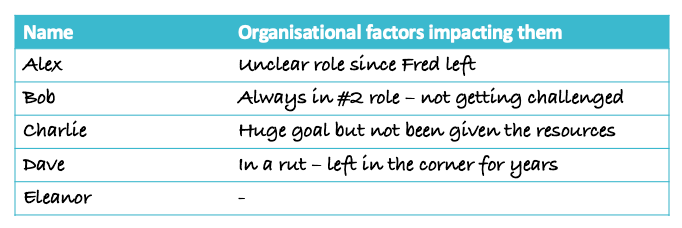
(b) Your leadership culture
As leadership John Maxwell says “the leader is the lid”.
In other words, you set the ceiling on your own team’s performance. Leaders define the culture, so it’s worth having a good look at yourself and the kind of culture you’re creating.
Here’s a simple way to do just that.
For each person, ask yourself: how much support, and how much challenge, have they received from you over the last few months?
For each person, ask yourself: how much support, and how much challenge, have they received from you over the last few months?
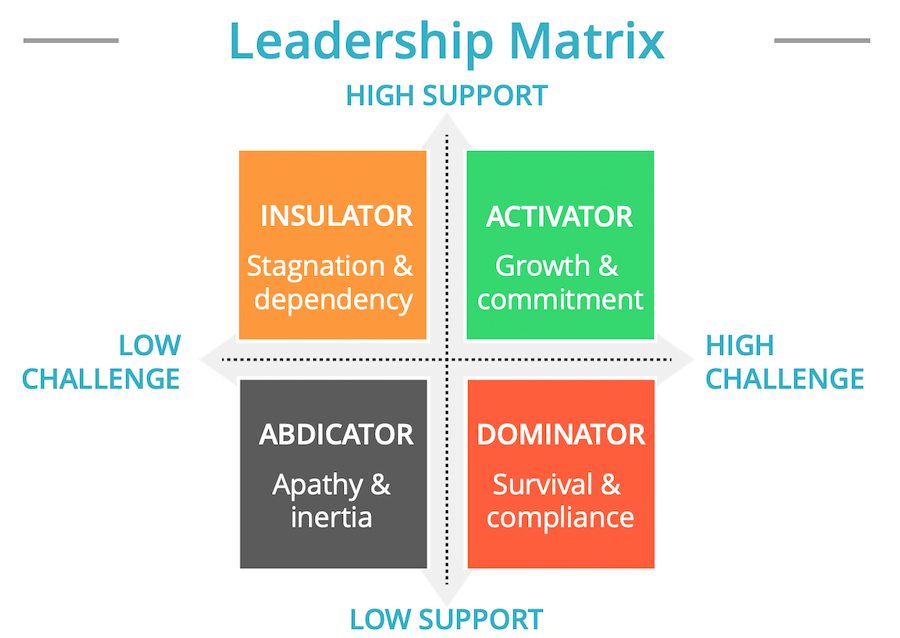
Support & Challenge - Defined
Action: Position them on the map as shown below. Give some thought about what support or what challenge you need to become an Activator to them and release their full commitment and energy. Use the worksheet to help you process and capture your thoughts.
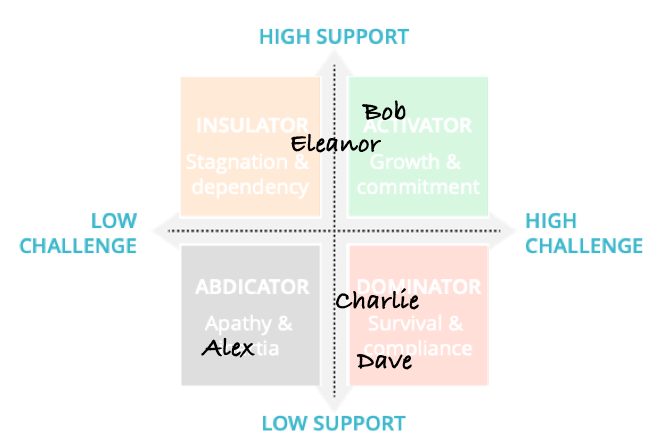
(c) Ideal role in the organisation
The final question is the overall role fit. Given what you know about their strengths, motivations, and limitations, are they in the absolute best role for them right now? If not, what would that role be - or how could they transform the current role to align better with their strengths and skills?

For example, you may identify a potential job move - or you might notice that if they could just delegate, say, the project management side of their role they would be freed up for the people management side where they truly excel.
3. Consider the team globally
Now you’ve looked at the individuals, step back and think about the team as a unit. It’s beyond the scope of this article to go into great detail about this, but here are some questions you can ask yourself:
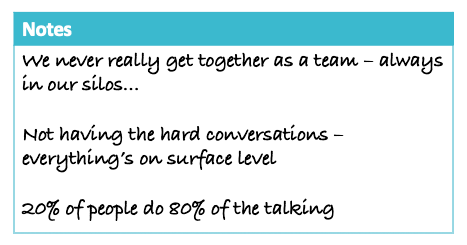
Take a team diagnostic: A team assessment is a fabulous way to get your thoughts straight on what’s holding back the collective team.
When I work with teams I use a comprehensive diagnostic tool that every team member completes and that evaluates six primary areas of team health in detail.
However, to get started you can take 60 seconds and use our free Team Kryptonite Assessment to get an instant read of the #1 barrier to increasing your team’s performance.
4. Identify potential initiatives
So you’ve mapped out where each person is, and thought through the environmental factors helping and hindering their performance. Now it’s time to turn these into concrete initiatives you can implement.
(a) Identify 1-2 initiatives per person
Based on your previous thinking, write down one or two initiatives that would help each person the most.
You’ll find it helpful to note down both the what and the why in a single sentence.
For example, if Joe’s limiting factor is his lack of confidence in managing meetings, perhaps you write down “Ask Joe to chair our weekly meetings (so he can build experience and confidence)”.

(b) Identify 1-2 initiatives for the team
What does the team need, collectively, in the year ahead? Identify a couple of initiatives to build collective team capacity and performance. An away day or strategy day; a joint training session, a regular schedule of team dinners, a summer BBQ at your home…. Now’s the time to think things through.

AFTER the people planning session: Make sure you follow through
Congratulations! You’ve developed your draft people plan. Now it’s time to turn the ideas into action.
1. Agree a concrete next step with each person
Schedule time, perhaps during your regular 1:1s, to sit down with each person and discuss your thinking.
You may well have a corporate mandated ‘feedback and performance review meeting’ but actually doing this outside that cycle shows that this isn’t a ticking-the-box activity for you, but a genuine attempt to fight for that person’s highest possible good.
During the discussion, come to an agreement around focus areas. It may be they have different priorities from you, and you’ll need to adapt. Remember your 1-2 initiatives are only a starting point. In any case, the key is to agree a concrete next step that can clearly be ticked off as “done” in the next 2-4 weeks … and go ahead and put it in the diary.
2. Implement a follow-up structure
One of the tools I teach my clients is the ideas of STRUCTURE vs LIFE. The trellis and the vine. The life (the business and the day-to-day workings of the team) is what’s important, but it really needs the structure (meetings, systems, processes) to help it flourish.
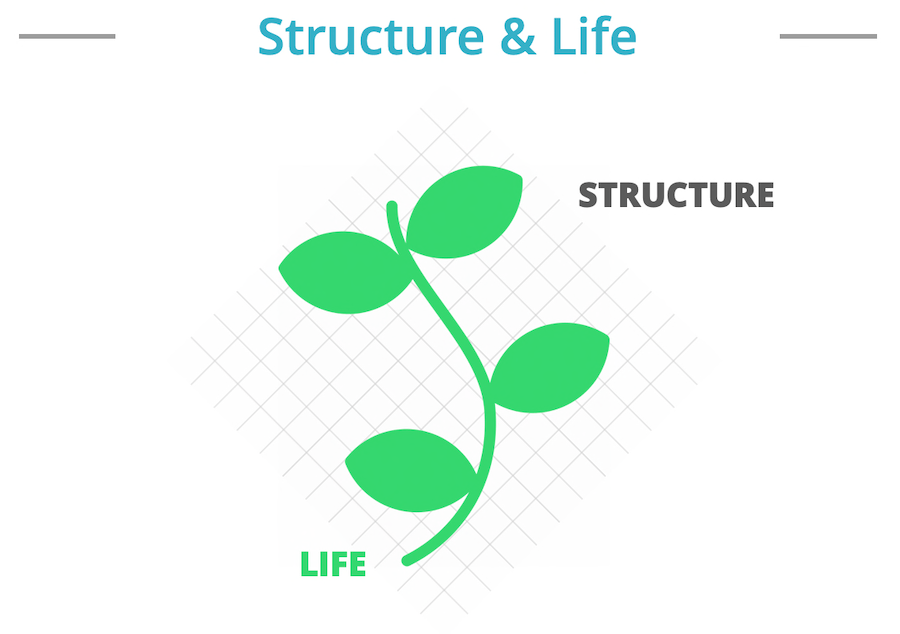
Take time now to schedule in the structures that you need to take your team to a new level in the year ahead. For example:
To summarise all this, capture every initiative you want to take forward along with a first step and a way that you can pretty much guarantee the follow-through will happen and the initiative will get done. Something like the table below:

The people plan / team development plan: A summary
So, we’ve seen why it’s so important to be strategic and intentional in improving your team’s ability to create results, collectively and individually. We’ve also run through a step-by-step process for doing just that - the “People Plan” process for team development:
It’s far quicker and simpler to do this process if you’ve got all the worksheets ready and at hand, to act as a prompt and to stimulate your thinking. You can download them using the link below:
P.S. How about doing a “People Plan on steroids”?
Hopefully by now you’ve seen the rationale for creating a strategic people plan that goes beyond the typical corporate annual review process.
But how about doing a turbo-boosted version?
Each month I offer a limited number of complimentary 1:1 consultations, which you can apply for here. A great use of this intense coaching time is to work on and develop a really robust people plan.
By doing the People Plan with an experienced coach, you’ll have your thinking pushed, your assumptions questions and your blindspots revealed. It’s a fantastic way of creating a robust and practical team development plan.
